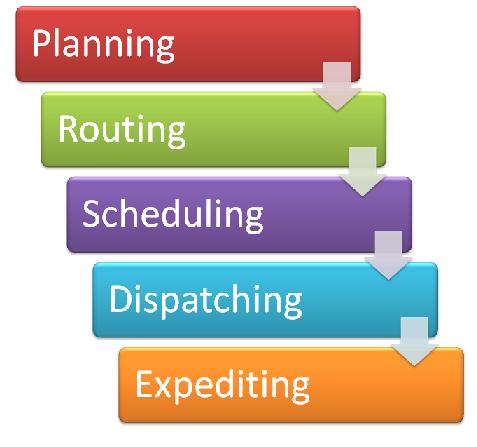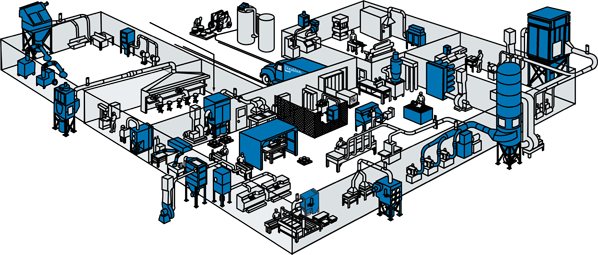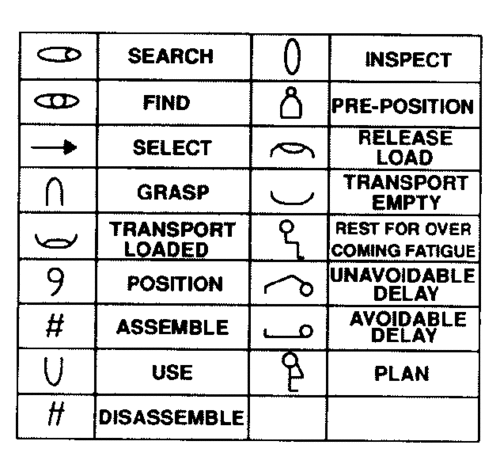Production control is introduced not merely to ensure that the goods will be produced on time, but is also meant to see that the goods produced are of the right quality. This is done through inspection of the products manufactured. Since the purpose of inspection is to compare the products with the standards of quality set earlier, it too, can be regarded as an effective agency of production control. One way of inspection is to examine the quality of finished products at the end of the process of production. But this may involve too much of wastage in the form of rejected products. To minimize the rejection of defective products, inspection may be conducted at every stage of production. Inspection Continue reading
Operations Management
Steps in Production Planning and Control
Production planning and control is one of the most important phases of production management, it is, as a matter of fact, the nervous system of a manufacturing organization. In manufacturing organization, it is essential that production is carried on in the best manner at the lowest cost, and the goods are of right quality and are produced at the proper time. This can be ensured only through proper planning of production. but mere planning of production will not solve the problem because production plans are not capable of self-actuating and do not lead to automatic accomplishment. For that the production manager has to take certain steps like, he has to regulate work assignment, review the work progress, and devise methods Continue reading
Types of Plant Layouts
Moore defined plant layout as, “The plan of or the act of planning, an optimum arrangement of facilities, including personnel, operating equipment, storage space, materials handling equipment and all other supporting services along with the design of the best structure to accommodate these facilities”. There are three basic types of plant layouts and these correspond to the three types of processing systems. Product layouts are most conducive to continuous processing, process layouts are used for intermittent processing and fixed position layouts are used when projects require layouts. 1. Product Layout Product layout is used to achieve a smooth and rapid flow of large volumes of products or customers through a system. This is made possible by highly standardized products or Continue reading
Method Study
Method Study is a technique which analyses each operation of a given piece of work very closely in order to eliminate unnecessary operations and to approach the quickest and easiest method of performing each necessary operation; it includes the standardization of equipment, method and working conditions; and training of the operator to follow the standard method. The philosophy of method study is that ‘there is always a better way of doing a job’ and the tools of method study are designed to systematically arrive at this better way of doing a job. Method study is essentially used for finding better ways of doing work. It is a technique for cost reduction. Method Study may also be defined as the Continue reading
Facilities Planning
One of the major strategy decisions that must be made by any organization is where to locate its producing and storage facilities. For manufacturers, the problem is broadly categorized into factory location and ware house location; within this categorization, we may be interested in locating the firm’s first factory or warehouse or locating a new factory or warehouse relative to the locations of existing facilities. The general objective in choosing a location is to select that site or combination of sites that minimizes two classes or costs — regional and distribution or sites that minimizes two classes or costs — regional and distribution costs. Regional costs are those associated with a given locate and include land, construction, manpower, and state Continue reading
Basic Principles of Total Quality Management (TQM)
Total Quality Management ensures maximum effectiveness and efficiency within a business and secures commercial leadership by putting in place process and systems which will promote excellence and prevent errors. It ensures that every aspect of the business is aligned to the customer needs and the advancement of business goals without duplication or waste of efforts. Different companies have different approaches to implement Total Quality Management (TQM). The following principles (which are common to all companies) must be adhered for the successful Total Quality Management (TQM) implementation: Continuous improvement. TQM is a long-term process that entails achieving improvements in the company’s operations. This means that management should establish targets for improvement and measure progress by using reliable criteria. The quest for Continue reading



